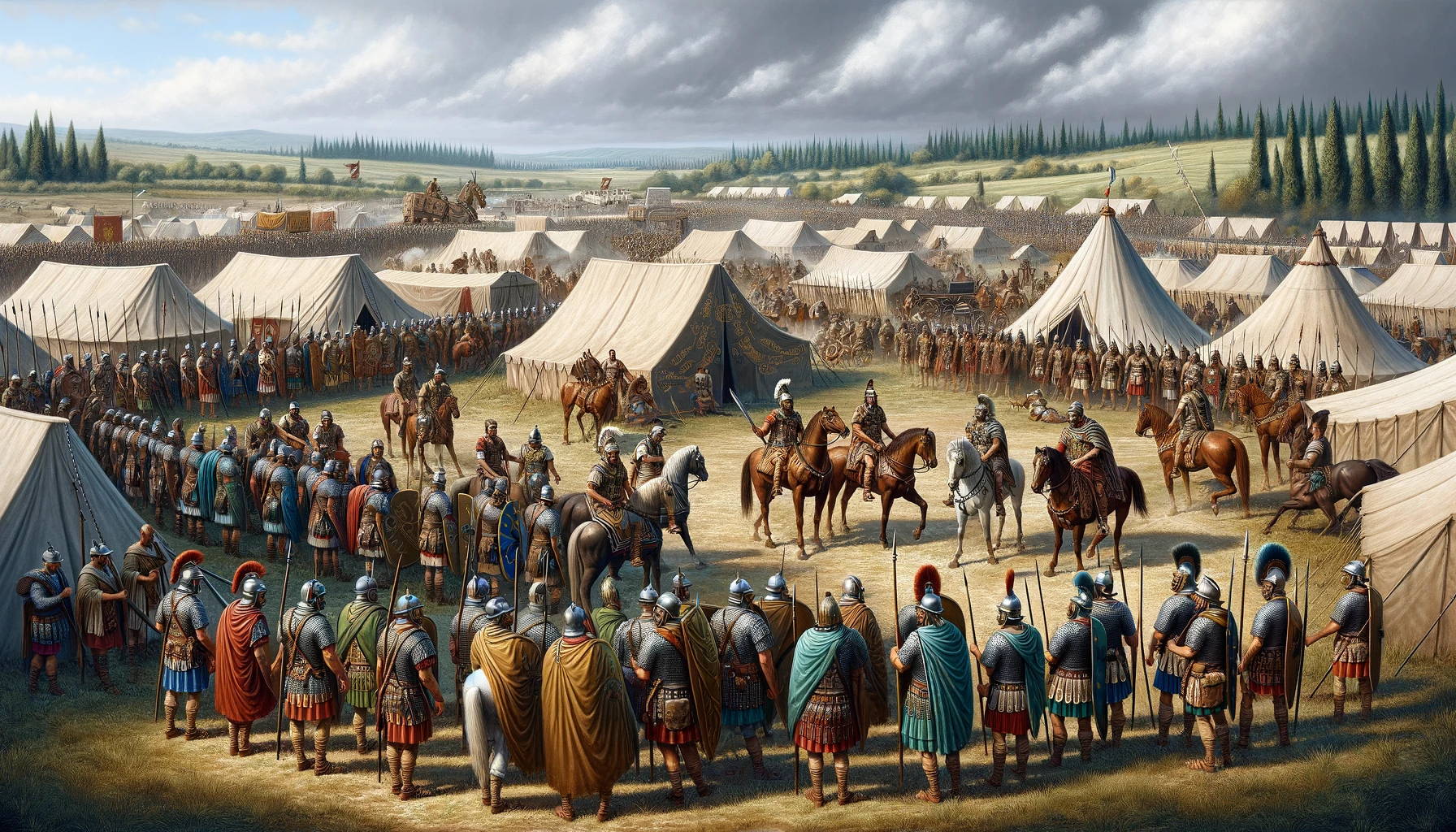This large, part-mounted cohort was recruited from amongst the Tungri tribe of eastern Belgica, inhabiting the western fringes of the Arduinna Silva (the Ardennes) south-east of Brussels. The evidence for this cohort in Britain is fairly substantial, though somewhat localised, there being at least 13 inscribed altarstones and tombstones naming the regiment from two separate locations. They appear to have been stationed at Birrens on the western Scottish/English border during the Antonine period and later removed to Castlesteads on Hadrian’s Wall sometime during the late-2nd/early-3rd centuries.
What does Cohors Secundae Tungrorum milliaria equitata mean?
- Cohors (Cohort): This refers to a military unit in the Roman army. A cohort was a standard tactical unit of a Roman legion, although it could also operate independently.
- Secundae (Second): This denotes the unit’s numerical position or order. In this case, “Secundae” means it is the second cohort of its kind.
- Tungrorum: This part of the name usually indicates the ethnic origin or affiliation of the soldiers in the cohort. “Tungrorum” suggests that this cohort was originally raised from the Tungri, a tribe or group of tribes in the region of modern Belgium.
- Milliaria: This term indicates the size of the cohort. A standard Roman cohort consisted of about 480 soldiers (six centuries, each led by a centurion, with 80 soldiers), but a “milliaria” cohort was enlarged, typically having about 800 to 1,000 soldiers. The term “milliaria” is derived from “mille,” meaning thousand in Latin.
- Equitata: This signifies that the cohort was a mixed unit of infantry and cavalry. In a typical equitata cohort, a proportion of the soldiers would be cavalrymen, providing a balanced force capable of both foot and mounted combat.
Evidence for the presence of Cohors Secundae Tungrorum milliaria equitata in Britain
- Birrens (RIB 2092 altar; 2094 pedestal; 2100, 2104, 2107-2109 altars; 2110 157-158AD; 2115 tombstone).
- Castlesteads (RIB 1981/1982 altars; 1983 altar 241AD; 1999 238-244AD).
